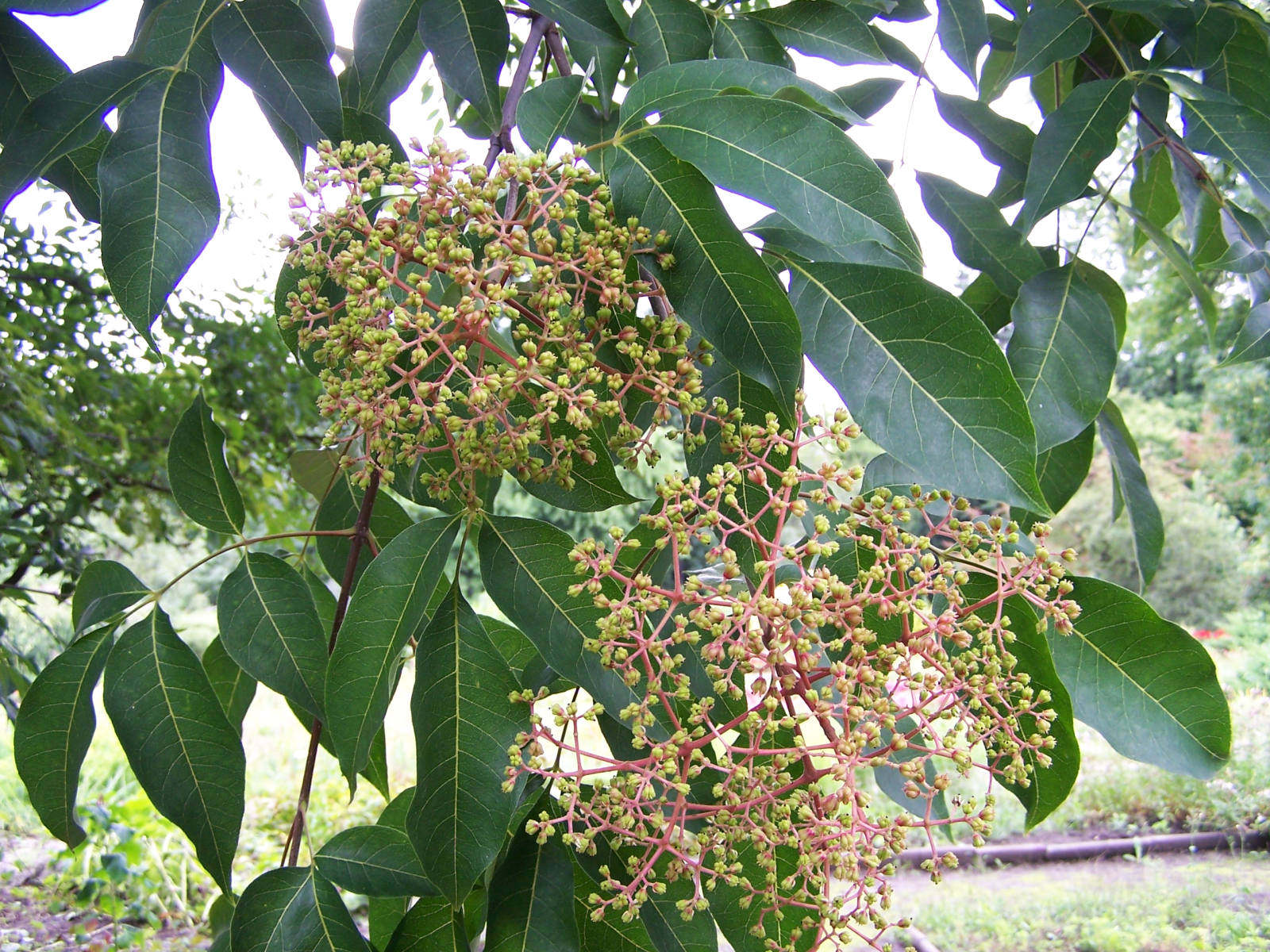
Pau Pámies Grácia, CC BY-SA 4.0
Vanuatu
Evodia “Nasei”
Evodia Hortensis

Pau Pámies Grácia, CC BY-SA 4.0
General Description / Cultural Significance
The evodia (Evodia Hortensis) a wild aromatic native shrub can grow up to 20 feet tall and is often cultivated around villages as boundary markers and around houses as an insect repellent. As an archipelago of 12 principal islands and 60 smaller islands in the South Pacific, Vanuatu has adopted or otherwise developed over 113 indigenous languages, all of which have words for this plant, suggesting it is more significant than its monetary value might suggest.
The shrub’s fragrant leaves are often distilled in coconut oil and used for personal care and medicine. In traditional medicine, it is prepared in several ways, like a tea or a paste, and is believed to cure many different ailments. It is also believed that the shrub has an array of magical applications. For example, on Futuna, one of Vanuatu’s many scattered islands, the evodia is one of many leaves that is bound into a bundle and thrown into the ocean to quiet any rough seas.
Additionally, the shrub is used as a symbol of exchange. When someone wears evodia leaves around their neck, it is an indicator that they have nothing to trade or are unable to pay for essential goods like groceries or water. The display of the evodia leaves exempts the buyer from the need to trade or give money but indicates their good faith in the exchange.
Climate Change / Conservation Status
While Vanuatu boasts a substantial level of biodiversity, it is also subject to the many negative impacts of climate change, endangering all of its flora, including the evodia. Rising sea levels suggest significant erosion is imminent, threatening all life in Vanuatu. This gradual erosion is not only a threat to life in Vanuatu but also to tourism, Vanuatu’s most lucrative industry.
At one point, Vanuatu had one of the highest happiness and contentment ratings in the world. Since then, Vanuatu’s grim forecast has made this statistic seem long ago to those who face climate vulnerability daily. In December 2005, the United Nations declared residents of the Torres Islands, a strait of islands in the north of Vanuatu, to be Earth’s first climate refugees as they escaped rising waters.
Alternate Names
Nasei
Sources
Australian Government. Retrieved Feb 6, 2018, from https://researchonline.jcu.edu.au/8027/1/ACIAR_Sandalwood.pdf
Forst, J.R, and G. Forst. “Evodia Hortensis.” No Record – Useful Tropical Plants, UTP Database, tropical.theferns.info/viewtropical.php?id=Evodia%2Bhortensis. Accessed 20 Feb. 2024.
Gillieson, David. “An inventory of wild sandalwood stocks in Vanuatu“. Australian Centre for International Agriculture Research.
“The first climate change refugees from Vanuatu still under threat”. Institut de Recherche pour le Développement France. Retrieved Feb 6, 2018, from https://en.ird.fr/the-media-centre/scientific-newssheets/386-the-first-climate-change-refugees-from-vanuatu-still-under-threat
“The impact of climate change on Vanuatu”. Andrewgray.com. Retrieved Feb 6, 2018, from http://www.andrewgray.com/essays/climatevanuatu.htm
Vanuatu Cultural Center, Vanuatu. This country statement can be found on the World Sensorium original website.
“Vanuatu”. Pacific Community. Retrieved Feb 6, 2018, from http://www.pacificwater.org/pages.cfm/country-information/vanuatu.html

